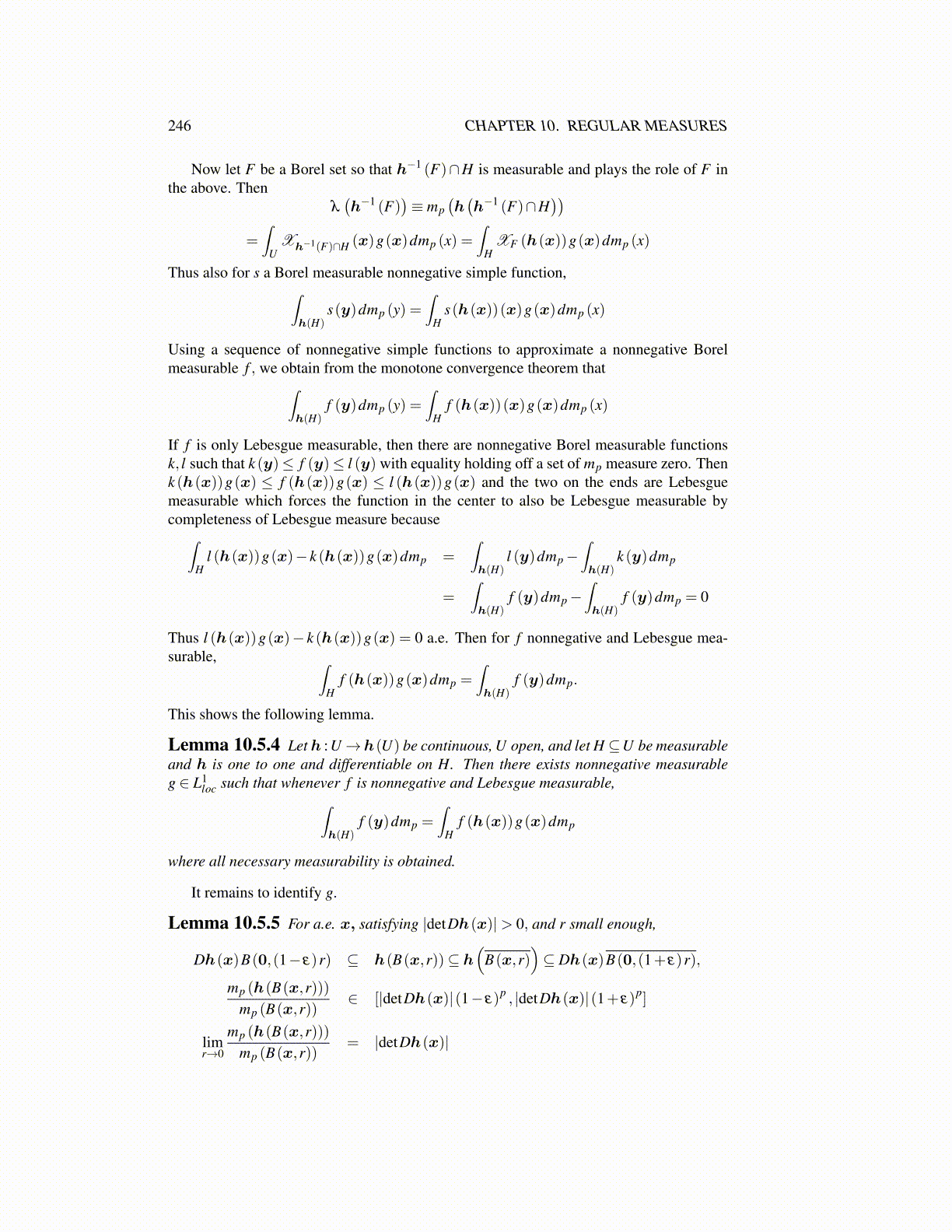
246 CHAPTER 10. REGULAR MEASURES
Now let F be a Borel set so that h−1 (F)∩H is measurable and plays the role of F inthe above. Then
λ(h−1 (F)
)≡ mp
(h(h−1 (F)∩H
))=∫
UXh−1(F)∩H (x)g(x)dmp (x) =
∫H
XF (h(x))g(x)dmp (x)
Thus also for s a Borel measurable nonnegative simple function,∫h(H)
s(y)dmp (y) =∫
Hs(h(x))(x)g(x)dmp (x)
Using a sequence of nonnegative simple functions to approximate a nonnegative Borelmeasurable f , we obtain from the monotone convergence theorem that∫
h(H)f (y)dmp (y) =
∫H
f (h(x))(x)g(x)dmp (x)
If f is only Lebesgue measurable, then there are nonnegative Borel measurable functionsk, l such that k (y)≤ f (y)≤ l (y) with equality holding off a set of mp measure zero. Thenk (h(x))g(x) ≤ f (h(x))g(x) ≤ l (h(x))g(x) and the two on the ends are Lebesguemeasurable which forces the function in the center to also be Lebesgue measurable bycompleteness of Lebesgue measure because∫
Hl (h(x))g(x)− k (h(x))g(x)dmp =
∫h(H)
l (y)dmp−∫h(H)
k (y)dmp
=∫h(H)
f (y)dmp−∫h(H)
f (y)dmp = 0
Thus l (h(x))g(x)− k (h(x))g(x) = 0 a.e. Then for f nonnegative and Lebesgue mea-surable, ∫
Hf (h(x))g(x)dmp =
∫h(H)
f (y)dmp.
This shows the following lemma.
Lemma 10.5.4 Let h : U→h(U) be continuous, U open, and let H ⊆U be measurableand h is one to one and differentiable on H. Then there exists nonnegative measurableg ∈ L1
loc such that whenever f is nonnegative and Lebesgue measurable,∫h(H)
f (y)dmp =∫
Hf (h(x))g(x)dmp
where all necessary measurability is obtained.
It remains to identify g.
Lemma 10.5.5 For a.e. x, satisfying |detDh(x)|> 0, and r small enough,
Dh(x)B(0,(1− ε)r) ⊆ h(B(x,r))⊆ h(
B(x,r))⊆ Dh(x)B(0,(1+ ε)r),
mp (h(B(x,r)))mp (B(x,r))
∈ [|detDh(x)|(1− ε)p , |detDh(x)|(1+ ε)p]
limr→0
mp (h(B(x,r)))mp (B(x,r))
= |detDh(x)|